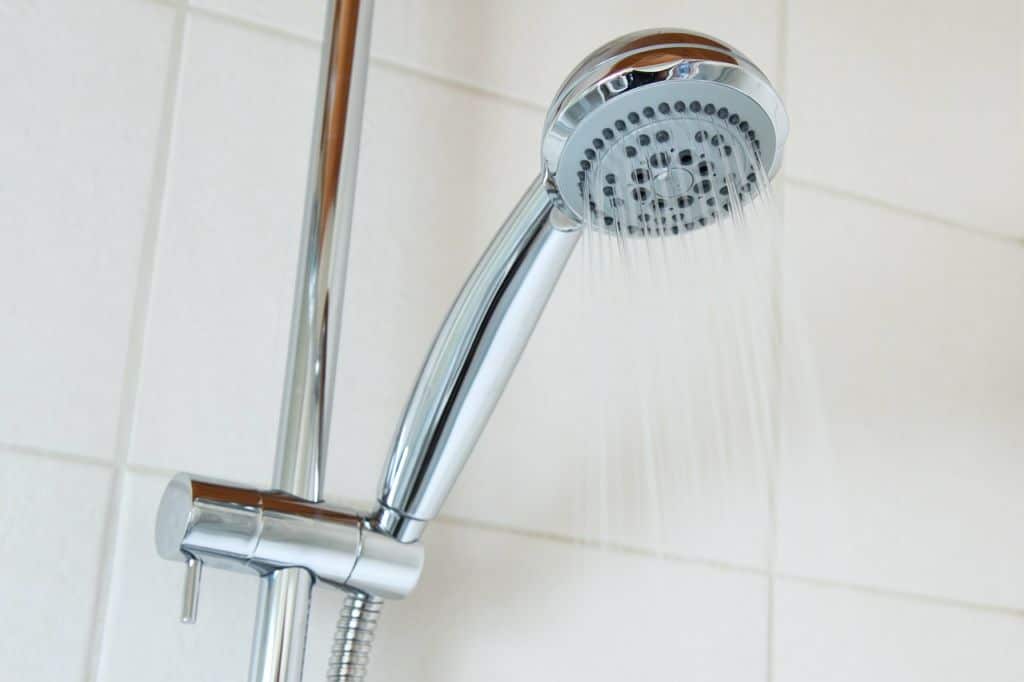

Treat your shower with Endurance BioBarrier every 6 months to prevent mold growth.If possible, DO NOT USE one of those suction cup non-slip mats in the shower.Weekly is better but no one has time for that! So shoot for every two weeks. Clean your shower from top to bottom every 14 days at a minimum.Once a week spray the shower with EC3 Mold Solution Spray to kill any new mold spores that may be trying to root.After showering wipe down the entire shower including all your shampoo and soap bottle.Remove any hair after showering and pour a little vinegar down the drain weekly to keep the drain clean and prevent mold spores from developing. It is important to keep drains open and clear of cellulose materials. Shower drains contain biofilm and cellulose materials such as soap scum, body hairs, and oils and lots of moisture so they can be a breeding ground for black mold.Keep the bathroom door open when showering if possible. Turn on the exhaust fan when showering and leave it on for 30 minutes afterwards. There are many colors of mold and shower mold can be pink, green, brown, or even grey. Try to prevent shower mold and of course remove it Don’tĪssume that since mold in the shower isn’t usually super toxic that you can’t To your genetic makeup, your current health, and many additional factors. But regular ol’ mold in the shower… usually more allergenic Infiltrated your shower then your shower can become a breeding ground for some If you have a bigger issue in your bathroom or home and THOSE spores have Not to say that one of the more toxic molds can’t ever grow in your shower. This is because your shower areas and surfaces don’t have cellulose (found in things like wood, fiberboard, lint, paper, and dust) which is required for most of the really hazardous types of mold to grow. Is Shower Mold Toxic?ĭue to the way bathrooms and showers are constructed today, the black mold you see in your shower is less likely to be the really hazardous type of mold. Then water can seep behind the shower tiles allowing mold to grow. The exception is if your grout is old and cracking. Mold can also grow behind shower tiles and on the wall but this is due to a leak behind the shower and not from water in the shower typically. While not technically a part of the shower, mold can grow on a shower curtain.Mold can grow under shampoo bottles, bars of soap, shaving cream bottles, etc….It can grow in the door tracks if you have doors.It can grow around the drain and on the drain plug.It can grow inside the window frame if your window is IN the shower like mine is.Onto the shower or tub create a food source for mold to feed on.Ĭhoice vacation destination it would be the shower. Shower is because grime from body oils and soap scum which is washed off and Since bathrooms are often not well ventilated the humidity tends to hang around and wet surfaces take a long time to dry out. Steam from the shower or a hot bath also makes the bathroom more humid. On top of this, when the water in the bathroom does dry out it evaporates into the air and increases the humidity. If you don’t dry this moisture out quickly it can easily lead to mold growth. There is lots of water and humidity in the bathroom which mold just adores.įrequently running water in the shower creates wet surfaces and puddles of water. It’s very common for mold to be found in the shower.


 0 kommentar(er)
0 kommentar(er)
